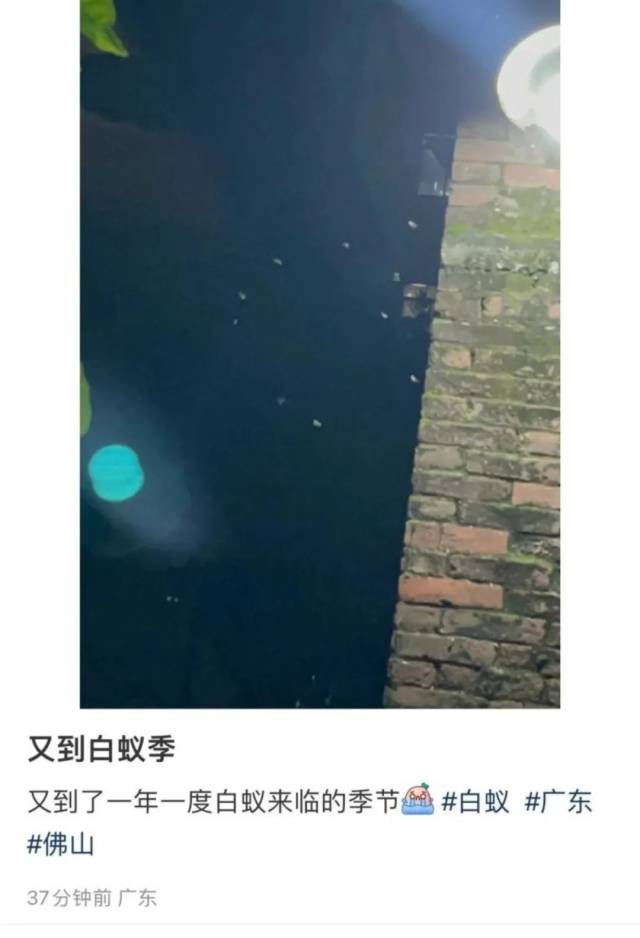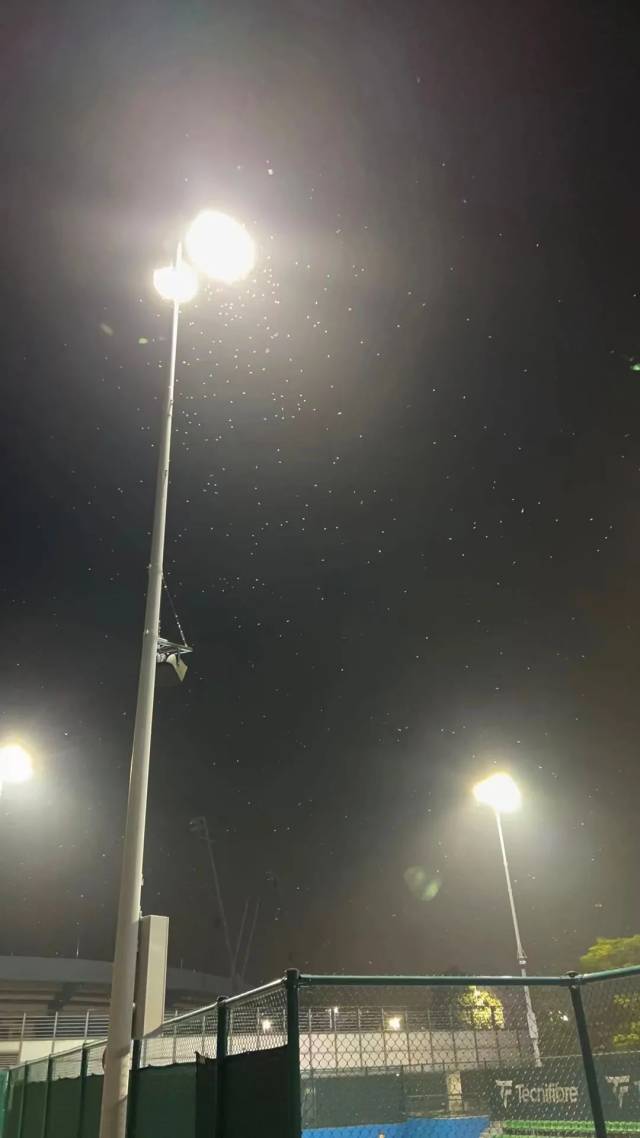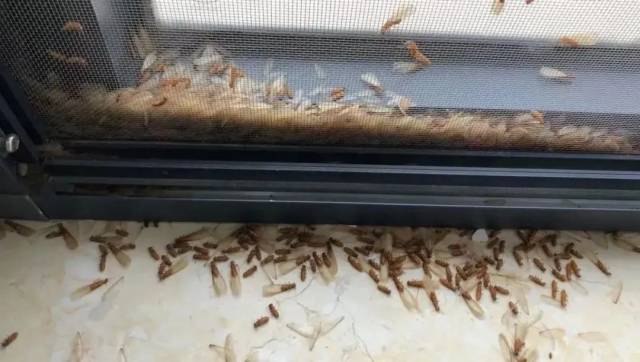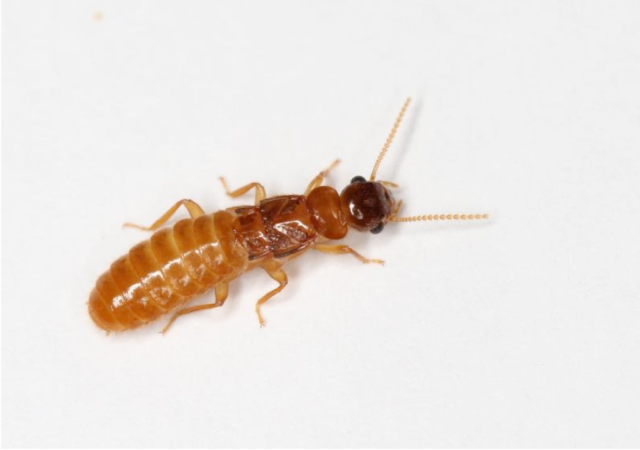Recently, as the weather gets hotter and rainier, netizens in Guangdong shared pictures and videos showing a resurgence of termite swarms, sending shivers down people's spines.
Especially after rain, be vigilant as the termites may swarm in the evenings. Swarm refers to the reproductive flight of mature winged termites leaving their nests.


Experts from the Guangzhou Termite Control Center point out that the rising temperatures since April in Guangzhou have created favorable conditions for the swarm of the Formosan subterranean termite. Based on temperature and weather forecasts, the peak period for termite swarms is expected to be in mid-May.
During the swarming period, large numbers of mature winged reproductive termites will fly out of the nest in groups. Once grounded, the termites will shed their wings, mate, and find a good place to start a nest to populate, becoming new kings and queens.

Experts advise that during the swarming period, mature winged reproductive termites generally fly out in humid evenings after rain. Residents are urged to monitor their homes for termite presence. If winged reproductive termites are found indoors, there's no need to panic as termites do not affect human health, and the survival rate of winged reproductive termites is extremely low.
(Note: The Formosan subterranean termite is the main species that poses a threat to houses in Guangdong.)

If termites come from outdoors, simply close doors and windows, turn off indoor lights, or draw curtains and kill the few entering termites. Alternatively, you can use a vacuum cleaner to remove them. For larger numbers, turn off all other light sources in the house, place an open lamp on the table and turn it on, and then put a basin of soap water underneath to lure and kill the termites attracted to light. Then clean up promptly.
Protect the affected area properly if termites are confirmed to be coming from indoors. Avoid moving termite nests or damaging termite trails, and refrain from using insecticides or fire, as this will only disturb the termites, causing them to scatter and potentially worsen the situation. Instead, promptly contact professional termite control organizations to handle the situation.
Tips for Identifying Termites:
1. Look for signs of termite activity, such as termite trails and emergence holes, in the house.
Termites are sensitive to light and typically operate within the inner wooden structures, forming tunnels. Their activity may not be visible on the surface of wooden components until there are noticeable changes, indicating internal damage. However, signs of termite activity, such as occasional trails on walls and emergence holes during flight periods, may still be observed.
2. Watch for signs of termite swarms.
Early summer is the peak season for termite swarms. At dusk or before heavy rain, large numbers of winged termites can often be seen around houses, window sills, and doorways. They may be flying in the air or engaged in mating behavior, resembling a vast army. This phenomenon, known as a swarm, occurs annually as part of the termite's life cycle. During this period, numerous termites emerge from their nests, mate upon landing, and then seek out hidden, dark areas to establish new colonies.
3. Regularly inspect items that have been left undisturbed for long periods to check for signs of termite damage.
Items left untouched for extended periods are often susceptible to termite infestation. Residents should pay attention to these three indicators of termite activity to determine whether their living or working spaces are affected by termites.
Author | Alice
Editor | Steven, Will, James
















